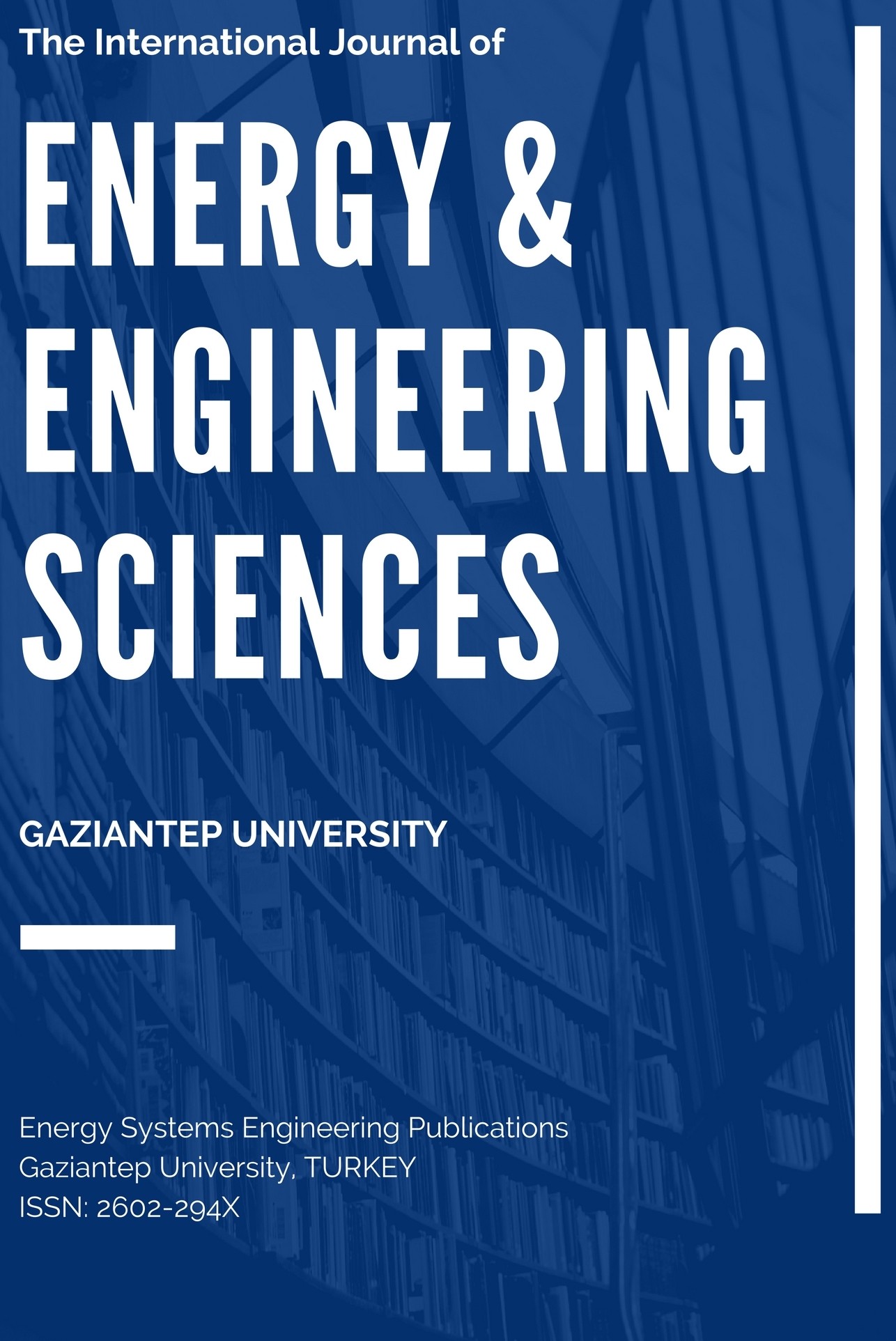ONE DIMENSIONAL MODELING OF GASOLINE ALCOHOL DUAL FUEL COMBUSTION ENGINE
ONE DIMENSIONAL MODELING OF GASOLINE ALCOHOL DUAL FUEL COMBUSTION ENGINE
___
- Ahmed, S. (2013). Effect of Methanol – Gasoline Blends on S.I. Engines Performance and Pollution. Mechanical & Mechatronics Engineering, 13,5-15
- Anderson,J.E.,DiCicco,D.M.,Ginder,J.M.,Kramer,u., Leone, T.G., Raney-Pablo, H.E & Wallin>on, T.J. (2012). Quantifying the potential benefits in the United States. Fuel,97, 585-594
- Battin-Leclerc, F. (2008). Detailed chemical kinetic models for the low-temperature combustion of hydrocarbons with application to gasoline and diesel fuel surrogates. Middle east journal of scientific Research, 4,429-431.
- Feng, R.Yang,J.,Zahng,D.,Deng,B.,Jiangin,F.Liu,J. & Liu,X (2013). Experimental study on SI engine fuelled with butanol–gasoline blend and H2O addition .,. Journal of Energy conversion and management, 74,192-200.addition ,Energy conversion and management, 74,192-200.
- Fröjd, k. P. (2012). 1D engine modeling with detailed reaction kinetics. Journal of Swedish and Finnish National Committees of the International Flame Research Foundation,17, 233-228.
- Bayraktar, H. (2005). Experimental and theoretical investigation of using gasoline– ethanol blends in spark-ignition engines. Renewable energy, 30, 1733-1747.
- He, B., &Zhao,H. (2015). Comparison of combustion characteristics of nbutanol/ethanol–gasoline blends in a HCCI engine. Energy Conversion and Management, l95 pp 101-109.
- Iliev, S. (2015). A Comparison of Ethanol and Methanol Blending with Gasoline Using a 1-D engine Model. Procedia Engineering., 100, 1013-1022.
- Kumar, K. .. (2014). Autoignition response of n-butanol and its blends with primary reference fuel constituents of gasoline, Combustion and Flame,162, 2466- 2479.
- Masum, B., Masjuki,H.,Kalam,M.,Fattah,M.,Palash,S. &Abedin,M. (2013). Effect of ethanol–gasoline blend on NOx emission in SI engine . Renewable and Sustainable Energy Reviews, 24, 209-222.
- Manzetti, S. (2013). Background for new guidelines for emission control. Fuel, 140 ,293-301.
- Najafi, G., Tavakoli,T.,Yusaf,F., & Faizollahnejad M (2008). Performance and exhaust emissions of a gasoline engine with ethanol blended gasoline fuels using artificial neural network. Applied Energy, 86 630-639.
- Najafi, G., Ghobadian ,B., Yusaf, T., Ardebili ,S. & Mamat, R.. (2014). Optimization of performance and exhaust emission parameters of a SI (spark ignition) engine with gasoline-ethanol blended fuels using response surface methodology. energy, 110 ,1-15.
- Neroorkar, K. a. (2011). Modeling of vapor-liquid equilibrium of gasoline-ethanol blended fuels for flash boiling simulations. Journal of Fuel,90,665-673.
- Pathre, A. F, & Pathre,P.A. (2012). Experimental Investigation of Methanol, Ethanol and Butanol Blends with Gasoline on Si Engine. International Journal of Emerging Technology and Advanced Engineering, 2 ,2250-2459.
- Wang ,Y.,Yao,M. &Zheng,M. (2013). A semi-detailed chemical kinetic model of gasoline surrogate fuel for internal combustion engine applications. fuel,113,347- 356.
- Zahang, C. & Shen, P. K. (2011). The simulation based on CHEMKIN for homogeneous charge compression ignition combustion with on-board fuel reformation in the chamber. international journal of hydrogen energy 37, 446-4475.
- Zhang, Z.,TY,W., & XZ,M.(2014). Combustion and particle number emissions of a direct injection spark ignition engine operating on ethanol/gasoline and nbutanol/gasoline blends with exhaust gas recirculation. fuel,130,177-188.
- ISSN: 2602-294X
- Yayın Aralığı: Yılda 2 Sayı
- Başlangıç: 2016
- Yayıncı: Gaziantep Üniversitesi
WEAR PROPERTIES OF NANOFILLED AND MICROFILLED COMPOSITE RESTORARIVE MATERIALS
Efe Çetin YILMAZ, Recep SADELER
ONE DIMENSIONAL MODELING OF GASOLINE ALCOHOL DUAL FUEL COMBUSTION ENGINE
Mustafa YILMAZ, Hasan KÖTEN, Ramin Saadat POUR
PERFORMANCE EVALUATION OF HARMONICS ON POWER QUALITY: CASE STUDY
A GENERATION OF ELECTRICITY FOR A RESIDENCE WITH WASTE ENERGY RECOVERY GENERATOR
